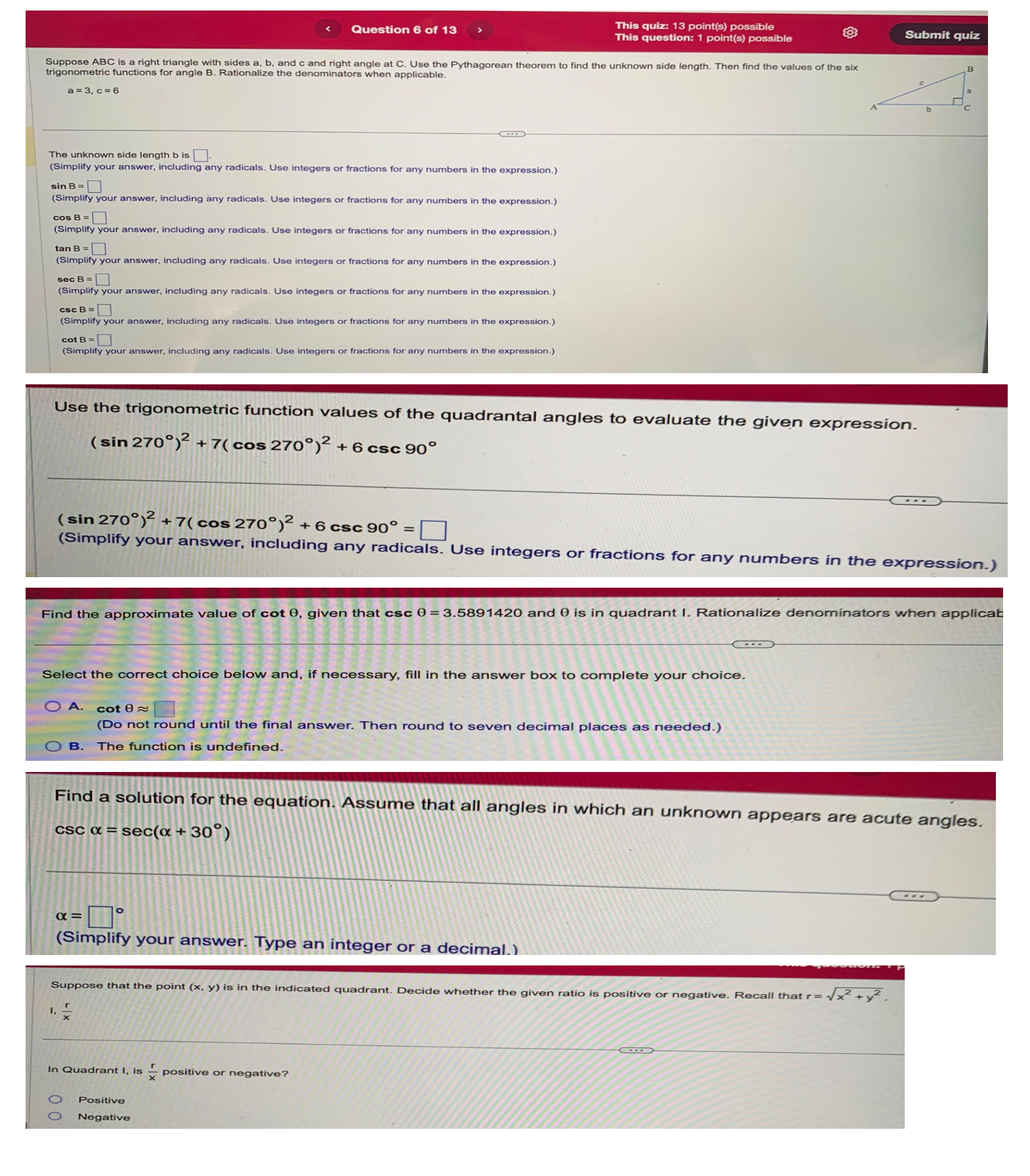Answered step by step
Verified Expert Solution
Question
1 Approved Answer
Question 6 of 13 This quiz: 13 point(s) possible This question: 1 point(s) possible Suppose ABC is a right triangle with sides a, b,

Question 6 of 13 This quiz: 13 point(s) possible This question: 1 point(s) possible Suppose ABC is a right triangle with sides a, b, and c and right angle at C. Use the Pythagorean theorem to find the unknown side length. Then find the values of the six trigonometric functions for angle B. Rationalize the denominators when applicable. a=3, c=6 Submit quiz The unknown side length b is (Simplify your answer, including any radicals. Use integers or fractions for any numbers in the expression.) sin B = (Simplify your answer, including any radicals. Use integers or fractions for any numbers in the expression.) cos B= (Simplify your answer, including any radicals. Use integers or fractions for any numbers in the expression.) tan B = (Simplify your answer, including any radicals. Use integers or fractions for any numbers in the expression.) sec B= (Simplify your answer, including any radicals. Use integers or fractions for any numbers in the expression.) csc B= (Simplify your answer, including any radicals. Use integers or fractions for any numbers in the expression.) cot B = (Simplify your answer, including any radicals. Use integers or fractions for any numbers in the expression.) Use the trigonometric function values of the quadrantal angles to evaluate the given expression. (sin 270) +7(cos 270) + 6 csc 90 (sin 270)+7(cos 270) + 6 csc 90 = (Simplify your answer, including any radicals. Use integers or fractions for any numbers in the expression.) Find the approximate value of cot 0, given that csc 0 = 3.5891420 and 0 is in quadrant I. Rationalize denominators when applicab Select the correct choice below and, if necessary, fill in the answer box to complete your choice. OA. cot 0 B. (Do not round until the final answer. Then round to seven decimal places as needed.) The function is undefined. Find a solution for the equation. Assume that all angles in which an unknown appears are acute angles. csc = sec(a + 30) (Simplify your answer. Type an integer or a decimal.) Suppose that the point (x, y) is in the indicated quadrant. Decide whether the given ratio is positive or negative. Recall that r= x + y. 1, In Quadrant I, is positive or negative? Positive Negative
Step by Step Solution
There are 3 Steps involved in it
Step: 1

Get Instant Access to Expert-Tailored Solutions
See step-by-step solutions with expert insights and AI powered tools for academic success
Step: 2

Step: 3

Ace Your Homework with AI
Get the answers you need in no time with our AI-driven, step-by-step assistance
Get Started


